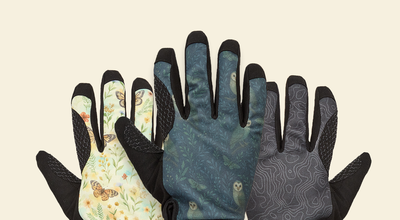When to Harvest Potatoes
Potatoes are one of the most mysterious vegetables in the garden. Most other fruits and vegetables have a clear sign when they're ready to be harvested - tomatoes and peppers turn red, beetroots and radishes peek out of the top of the soil, and leafy greens grow to a certain size. But how do you know when potatoes are ready to be harvested?
The Importance of Monitoring the Plant's Leaves
The potato plant's bushy green leaves provide all the signs you need to know what's happening underground. As the plant matures and begins to flower, you can even harvest a few of the baby potatoes near the surface.
As the potato plant matures, you'll notice the bushy green leaves will begin to wilt, and the flowers will start to bloom. This is a sign that the potatoes are ready to be harvested. You can harvest the potatoes near the surface by gently digging them up with a shovel or trowel. Be sure to only take the potatoes that are visible and to leave the smaller potatoes in the soil for a few more weeks. When harvesting, be sure to be gentle and avoid disturbing the other potatoes in the ground.

Signs from the Plant
The potatoes may grow underground but the potato plant is full of bushy green leaves that give us all the signs we need to know whats happening down below. When the plants are green and bushy it shows you that the tubers are starting to develop underground. As the plant matures and starts to flower (they make the prettiest purple and while flowers that look a lot like tomato blossoms) you can do a very shallow dig around the base of the plant and harvest a few of the baby potatoes near the surface. After flowering the plant starts to die back, the leaves turn from green to yellow, and eventually dry out to brown.

Curing the Potatoes
Unlike other fruits and vegetables, potatoes need to be left in the soil for an additional two weeks to "cure" before being harvested. This process is crucial for long-term storage, as it allows the potato's skin to thicken and retain moisture.
The curing process is essential for potatoes, as it helps the potato skins to become thicker and more resistant to damage. This will protect the potatoes during storage and transportation so that they stay fresher for longer. During the curing process, potatoes should be left in the soil for two weeks, during which time the skin will strengthen, and the potato will retain more of its natural moisture. After this period, the potatoes can be safely harvested and stored.
Harvesting process breakdown
- Leave potatoes in the soil for two weeks to allow the skins to thicken and retain moisture.
- During this period, the potato skins will become thicker and more resistant to damage.
- After two weeks, the potatoes can be safely harvested and stored.

Preparing for Storage and Consumption
When it's time to harvest, be sure to avoid washing your potatoes and keep an eye out for any green spots. These can be a sign of solanine, a toxin that can cause cramps and headaches if ingested. Sprouted potatoes are still safe to eat as long as they remain firm - simply pluck off the sprouts before cooking.

By following these tips and tricks, you'll be well on your way to growing a bountiful, delicious crop of potatoes. Knowing when to harvest them can be tricky, but with a bit of patience and observation, you'll soon be able to enjoy the fruits of your labor. So don't be afraid of the mystery - get out there and start growing your own potatoes today!












